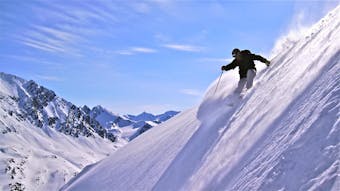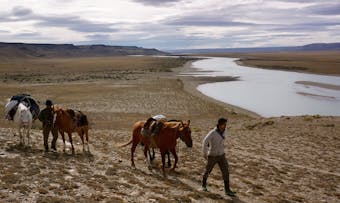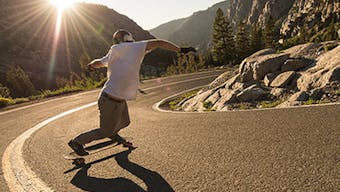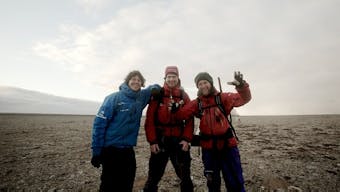Programme 3 - Objectif Amazone, Sufferfest 2, Ocean Gravity, Humble Pie, UnReal, 82 Year Old Sky Diver, Home Free
Take seven films of varying length – 3 - 46 minutes – settle down, and enjoy the ride!
This was an unusual and at times thrilling evening. The audience was predominantly young, and many looked seriously adventurous, with many personal tales of derring do up their sleek lycra sleeves and well worn boots.
Two films showed a road trip: Objectif Amazone followed French adventurers Paul Henri Vanthournout and dreadlocked Charles Antoine on a six month journey on foot over ancient trails and by raft from the Amazon’s source in Nevado Queshuisha to its river outlet at Macapa, Brazil. On the way they puzzle the locals, wrestle with two recalcitrant llamas named Serge and Bernard, and risk rapids and strong currents on a balsa raft constructed on the river bank to a sketchily remembered design of Thor Heyerdahl’s.
Sufferfest 2 was a cycling and rock climbing odyssey by Americans Alex Honnold and Cedar Wright in which they vanquished 45 of the South West’s most iconic desert towers to often spectacular photographic effect. The scenery between Colorado, Utah, New Mexico and Arizona is magnificent. Their earlier trip to conquer 5 of the tallest peaks in California was recalled often especially when Honnold’s bare, bleeding ass is shared with the viewer. No pain, no gain – yet onward.
Ocean Gravity explored the underwater world with a twist: zero gravity. The effect was total liberation of movement. The underwater world appeared as a planet, and the diver as a satellite, the music eerie and atmospheric.
Humble Pie was a 24 hour attempt at freeing Free Rider on El Capitan in Yosemite – the rock rising iconic and familiar to millions from news footage last year. The regular North West Route on Half Dome followed – the pace and ambition was awesome.
UnReal’s mountain bike sequence with wild mustangs galloping down a stony hillside, snow capped mountains behind was one of the most memorable in Anthill film’s ambitious attempt to deliver adventure’s liberation in order to blow our minds.
Feisty individuals were particularly memorable in two short films. 82 Year Old Sky Diver featured Dilys, an intrepid white haired, animated octogenarian who found sky diving ‘better than sex’. Her daring and new found confidence in the sky has benefited others on the ground. Director James Cullen included scenes of companionship and support from a charity founded by Dilys, benefiting disabled young people.
Most impressive of all – and wonderfully shot, was Home Free: a 5 minute film about champion free runner Will Sutton exploring his home island of the Isle of Man. ‘Most people know this place from the TT races, but I view it differently’, he said, and then tumbled, dived, and leapt along the coast, through ancient monuments, and across fields of oil seed rape.
It was spectacular, and illustrates two things important to viewers: shorter is better, and quality photography is expected. Length and poor quality camera work deaden – no matter what ambition is on show.







